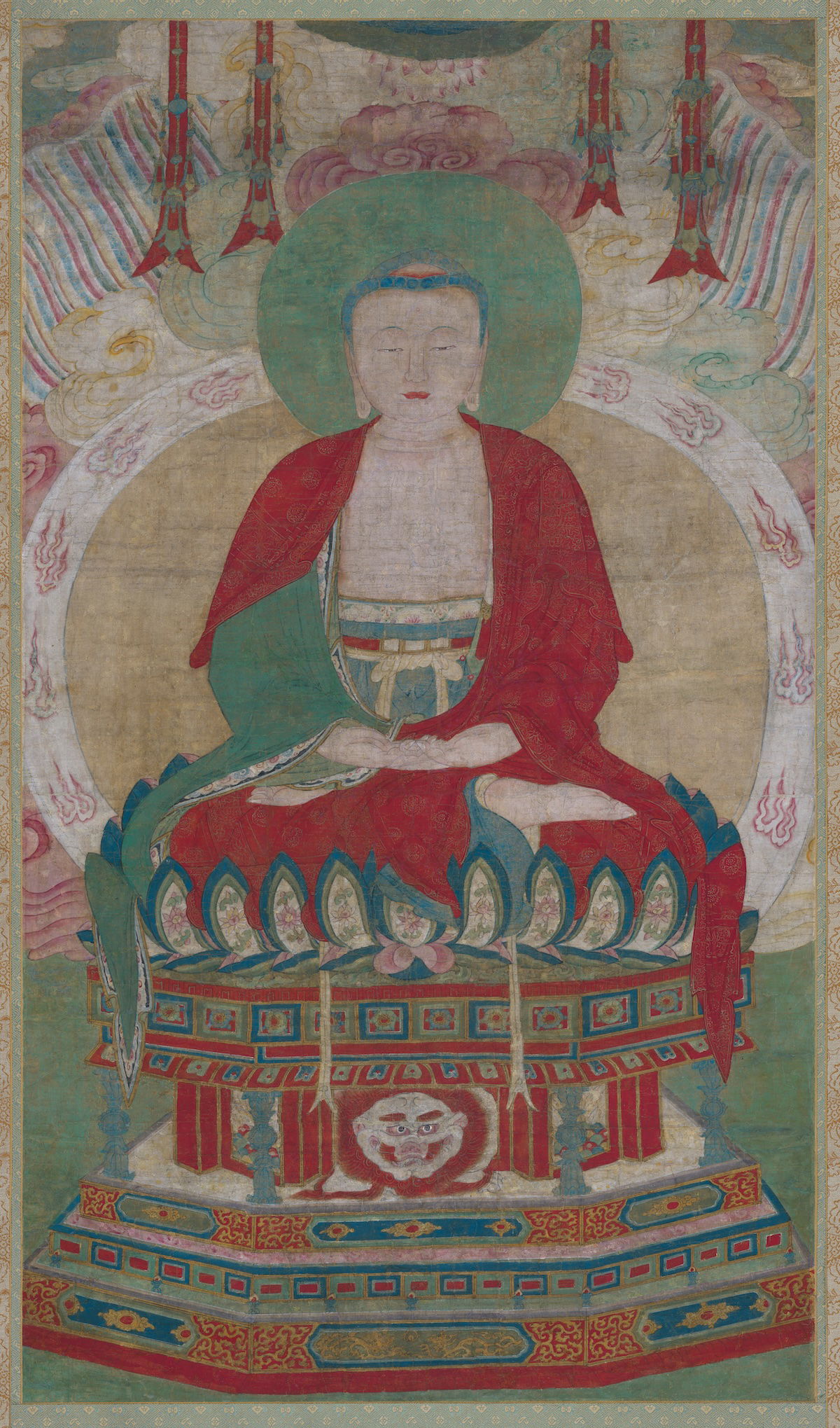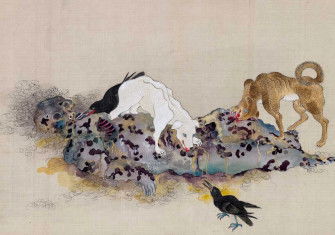‘Buddhism’ by Donald S. Lopez Jr. review
Buddhism: A Journey Through History by Donald S. Lopez Jr. swiftly soon loses sight of the Buddha himself. Is that a bad thing, and was he ever there?

Early on in this masterful account of Buddhism’s emergence and spread throughout the world, Donald S. Lopez cautions his readers that the very existence of a historical Buddha remains subject to debate. The first references to him do not appear until the era of the Indian emperor Ashoka, in the mid-third century BC. This is two centuries after the period in which the Buddha is generally believed to have lived, around the fifth century BC, though there is wild variation in these estimates, with some Tibetan sources suggesting that the Buddha died in 2420 BC. Lopez tells us that, in deference to Buddhist belief, he will assume the existence of the Buddha. Readers should, however, ‘bear in mind what an ephemeral, even phantasmagoric, figure he sometimes seems to be’.
What follows in Buddhism: A Journey Through History bears this out. Readers hoping for a deeper and more scholarly telling of a story whose outlines they already know – an Indian prince embarks on a mission to understand suffering and discovers a practical path to enlightenment – will find themselves challenged to rethink. That story, we discover, is a blend of ancient events, legends, and teachings ascribed to the Buddha with newer elements designed to answer the spiritual needs of modern westerners. Most lay Buddhists, across most of history, would not have meditated. Nor would they have been aware of the Four Noble Truths, regarded in our own time as Buddhism’s philosophical core. It would have been news to them that Buddhism is atheistic. And their hope, in practising Buddhism, was not for a permanent end to death and rebirth but rather happiness in a heavenly hereafter.
True to the global story that he is telling, Lopez does not begin with contemporary Western ideas about Buddhism and then set out to show how recent, contingent, and unusual they are. Rather, he offers a broad overview of Buddhist history followed by 30 thematic essays, on topics including food and immortality, sex and science, art and war. We begin with the world into which the historical Buddha is thought to have been born: an increasingly urbanised and prosperous northeast India, whose social order and cosmology was dominated by Vedic religion – out of which what came to be called ‘Hinduism’ later developed. This was a richly diverse environment: all sorts of religious ideas and practices were circulating, many of them ascetic in nature. Lopez guides us through the emergence of Buddhism from this milieu, via the teachings of the Buddha and communities of monks and nuns that grew up in his wake, all seeking to live according to his teachings (dharma) and his monastic code (vinaya). In time, they spread the Buddha’s message across Asia and beyond.
One of the major themes in Lopez’ account is the importance, to Buddhists, of authenticity. Sometimes this is a matter of asserting unbroken links back to the Buddha’s own teachings, as in the claim – more myth than history, Lopez suggests – that a First Council was held within months of the Buddha’s death, at which his teachings were faithfully codified. Parts of the world where Buddhism was received relatively late, such as Tibet and Japan, have nuanced the concept of authenticity to their own advantage. Tibetans, writes Lopez, claim to have ‘received and preserved the most complete compendium of the Buddha’s teachings’. In Japan, Buddhist claims to authenticity rest on the process of evolution and refinement – across time and place – through which ideas are said to have passed before reaching their present state of Japanese perfection.
Save for a first essay on ‘History’, Buddhism’s chapters are ordered alphabetically. Each is short enough to read in a single sitting. This is a refreshing approach, helping to persuade readers that straightforward, domino-theory chronology may not be the most fruitful way to approach Buddhism – whose cosmology, after all, admits of no beginning and no end to time. The result is a book that can be dipped into according to readers’ interests. Inevitably, readers will reach the end of some chapters and wish for more. The attempt by modern Buddhists, both Asian and Western, to downplay or even dispense with Buddhism’s heavens, hells, and deities and declare it compatible with the natural sciences makes for fascinating reading and seems to end all too soon.
Other highlights include an essay on ‘Narrative’, exploring the way that the Buddhist tradition made up for the relative lack of high drama in the historical Buddha’s life by furnishing him with colourful past lives – on the basis that his achievements as the Buddha must have been the fruit of karma built up over aeons. One of the most famous 19th-century scholars of Buddhism, Thomas W. Rhys Davids, claimed that these stories of the Buddha’s past lives were the basis for much European folklore. Chapters on ‘Art’ and ‘Immortality’ explore attempts by Buddhists to retain something of the Buddha’s presence after his death. We encounter debates, as yet unresolved, about why early Buddhist art apparently forbade depictions of the Buddha. Later Chinese and Japanese artwork emphasised the enormity of his passing: gods were shown descending from their heavens to catch one last glimpse of the Buddha in the days before his death.
The depth of Lopez’ scholarship is extraordinary: a testament to the richness of the Buddhist worldview and to its hold over the modern imagination. Lopez manages to wear all this lightly, sifting the claims that countless generations of Buddhists have made for what their founder taught while eschewing an impossible quest for ‘true Buddhism’ in favour of an open and humane interest in the needs and aspirations that have driven the making of those claims. At the end of it all, the Buddha himself is still the ‘ephemeral, even phantasmagoric, figure’ trailed in the introduction. But thanks to the range of human experience captured in these pages, this feels like a gain rather than a loss.
-
Buddhism: A Journey Through History
Donald S. Lopez Jr.
Yale University Press, 536pp, £28
Buy from bookshop.org (affiliate link)
Christopher Harding’s most recent book is The Light of Asia: A History of Western Fascination with the East (Allen Lane, 2024).






